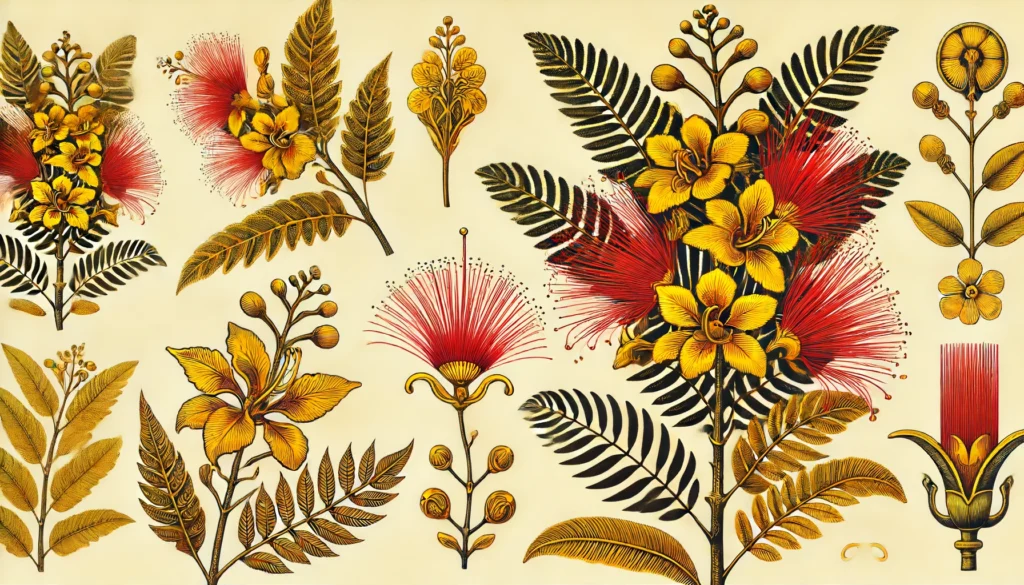

Home » Cat Plants » Brazilwood Plant Dangers: How It Can Harm Your Cat

Brazilwood, scientifically known as Caesalpinia echinata, is a non-toxic plant for cats. This tree species, native to the Atlantic Forest region of Brazil, is generally considered safe for felines to ingest. However, it is important to note that excessive consumption of any plant material can potentially cause gastrointestinal upset in cats.
Ingestion may cause mild gastrointestinal upset, but is generally not life-threatening.
Ingestion can result in mild symptoms like vomiting, diarrhea, or drooling. Rarely fatal but may require veterinary care.
Eating these plants can lead to more pronounced symptoms like abdominal pain, lethargy, or difficulty breathing. Veterinary intervention may be necessary.
Ingesting even small amounts can cause severe symptoms like organ damage, seizures, or cardiac failure without rapid treatment.
All parts of these plants are extremely poisonous to cats and can quickly lead to death, even with immediate veterinary care.
** Please note: Please note that toxicity level can vary based on the amount ingested and the specific cat. It's always best to keep these plants completely inaccessible to cats and seek immediate veterinary care or call the poison hotline if you suspect your cat has ingested any part of a toxic plant.
While Brazilwood is generally considered non-toxic for cats, ingesting large quantities of the plant material may potentially cause mild gastrointestinal discomfort, such as vomiting or diarrhea. However, these symptoms are typically mild and temporary, and should resolve on their own if the cat stops consuming the plant.
If your cat ingests a small amount of Brazilwood, it is unlikely to require veterinary care. However, if your cat consumes a large quantity of the plant and exhibits persistent symptoms such as vomiting, diarrhea, or lethargy, it is advisable to consult your veterinarian.

A: Yes, cats can be allergic to Brazilwood. Symptoms of an allergic reaction may include itching, sneezing, and skin irritation.
A: Yes, Brazilwood is toxic to cats. Ingesting any part of this plant can cause symptoms such as vomiting, diarrhea, and lethargy.
A: Symptoms of Brazilwood poisoning in cats include vomiting, diarrhea, excessive drooling, and abdominal pain. Immediate veterinary care is recommended if ingestion is suspected.
A: To prevent contact, ensure that Brazilwood is not present in your home or garden. Keep your cat indoors or monitor outdoor activities closely to avoid exposure.
A: If your cat ingests Brazilwood, contact your veterinarian immediately. Do not induce vomiting unless instructed by a veterinary professional. Immediate medical attention is necessary.
A: Brazilwood is more commonly found in wild areas rather than home gardens. However, if you do have this plant in your vicinity, it is important to ensure it is kept out of reach of cats to prevent accidental ingestion.
Brazilwood is a tree species native to the Atlantic Forest region of Brazil, particularly in the states of Rio de Janeiro, Espírito Santo, and Bahia. The tree has played a significant role in the history and culture of Brazil, as it was the primary source of a valuable red dye known as “brazilwood” or “brasilewood.” This dye was extensively used in the textile industry and was a major export commodity during the colonial era.The name “Brazil” is believed to have originated from the Portuguese word “braza,” meaning “ember” or “glowing fire,” referring to the reddish-brown color of the wood. The exploitation of Brazilwood for its dye led to the deforestation of large areas of the Atlantic Forest, and the species is now considered endangered in its natural habitat.
Please note: The information shared in this post is for informational purposes only and should not be considered as veterinary medical advice.
🐾 A hilarious or heart-melting cat video
🐾 Our latest paws-on review of a cool cat toy